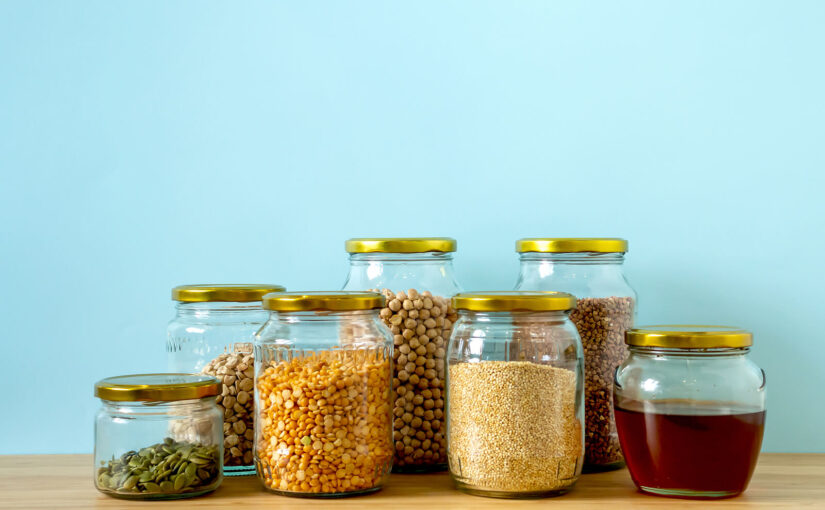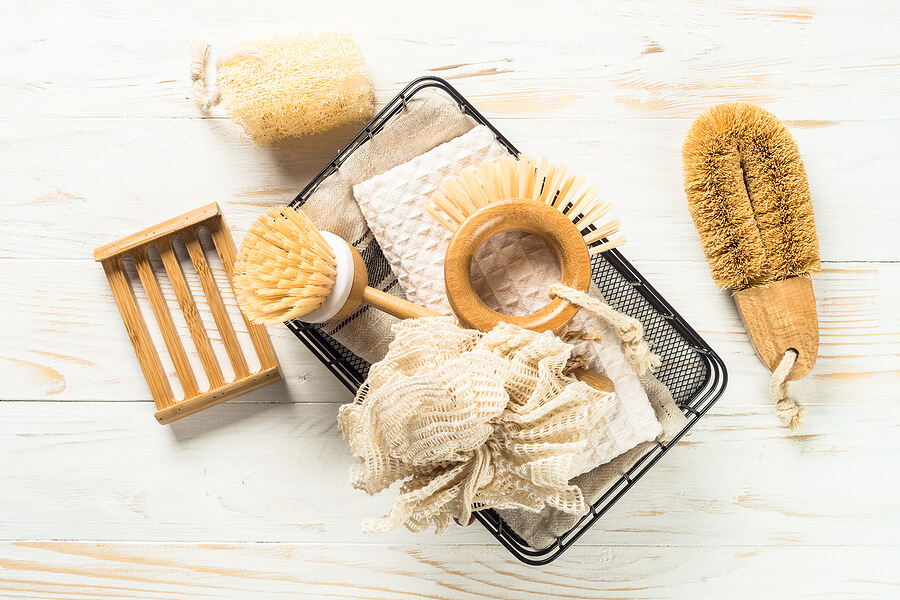The kitchen is the heart of the home and often where we use and generate the most plastic waste. In fact, since its creation in 1907, plastic use has consumed much of the UK.
You’ll find plastic in many kitchen items, from single-use plastic packaging to plastic utensils, cling film, Tupperware, and plastic-infused tea bags.
In the UK, 82% of adults want to reduce the amount of single-use plastic they throw away. However, standing in a kitchen surrounded by plastic can feel overwhelming.
Luckily, the best and easiest place to start your plastic-free journey is the kitchen. Discover how to generate less waste and do less damage to the planet with our handy guide.
Why are plastic kitchen products bad?
Plastic kitchen products are made using chemicals from non-renewable sources. Most plastic kitchen products contain different types of plastics. These materials are harmful to the planet as, once thrown away, they distribute microplastics and pollute the earth for years.
Plastic elements commonly found in the kitchen
PET is a type of plastic used for items such as soda bottles, water bottles, baking products, peanut butter jars, and frozen food packaging.
PVC is a strong and flexible plastic commonly used in food packagings such as plastic wrap and clingfilm. It is also the most environmentally damaging.
Plastic Tupperware products and food containers are made from Polypropylene, used for its high melting point.
Plastic spoons, forks, bakery trays, egg cartons, and lids are all formed from Polystyrene.
As you can see, our kitchen products have multiple types of plastic. Sadly, these items contribute to microplastic pollution and impact marine life.
Eco-friendly kitchen products
Eco-friendly kitchen products sound great, but what exactly do they do?
Most eco-friendly products are made of planet-friendly materials. They are reusable, compostable, or recyclable and usually replace an unsustainable plastic version.
Creating your plastic-free kitchen
Depending on what you have in your kitchen, you can always opt for sustainable kitchen products.
If you already have plastic products in good condition in your kitchen, don’t throw them away. Instead, donating the items is an excellent idea if you feel ready to remove plastic from your kitchen.
Single-use wraps and bags
Saving food for later is a great way to prevent food waste. Cling film is commonly used to preserve leftover food to be conveniently saved for later and not wasted. Shockingly, UK households use 1.2 billion meters of single-use cling film annually.
Luckily, clingfilm and single-use sandwich wraps are easy switches to make. One plastic alternative is beeswax wraps. Wraps are reusable for up to one year after purchase and are 100% compostable, meaning they won’t damage the planet and save money on clingfilm purchases.
Food containers
While plastic Tupperware is a handy kitchen addition, there are several eco-friendly options you can try instead. Glass and steel eco-food containers are two alternatives that last longer than plastic, are less likely to be damaged, and can also be recycled if needed.
Cleaning supplies
The most common sponge used in UK kitchens contains plastic. These sponges are sourced from non-renewable fossil fuels and shred microplastics down the sink every time you wash. They are also regularly thrown away by consumers.
To be more eco-friendly when washing up, reach for a biodegradable sponge or compostable dish brush. Any product made of cellulose or bamboo is perfect for the job.
Instead of using a single-use kitchen roll to clean up every spillage, opt for eco-friendly tea towels. Made of natural fibre cloth or bamboo, these are the perfect solution to small spillages and damp dishes.
Cooking Utensils and pans
Some pans and utensils are made of steel but have plastic handles. This is mainly for safety purposes to prevent the handles from burning consumers, as other materials conduct heat from the stove.
When replacing your cookware and utensils, search for cast iron, glass, and steel items. Plastic-free products will last longer and carry less environmental impact.
Remember to use up or gift any plastic kitchen items to someone who may appreciate them before throwing them away. Before you know it, you will have a completely plastic-free kitchen.
Low-waste Kitchen
Once you’ve made the swaps for a plastic-free kitchen, the next step is to focus on the waste you bring in. Aiming for a low-waste kitchen can be difficult as many food products come covered in plastic. Reviewing your weekly shop and making some changes can make a difference.
Only purchase loose produce you can pop into your re-useable cotton bags. Avoid tea bags containing plastic and non-recyclable coffee pods. Purchase a compost bin for vegetable peelings, fruit waste, teabags, and grass cuttings.
Avoid purchasing black bin bags and opt for green compostable bin liners so any waste you have isn’t confined to a black bag and will eventually decompose.
In the UK, supermarkets also try to encourage consumers to go packaging free with their products. Swapping plastic-wrapped products and using in-store refill stations are great if you have glass jars to store your dry produce. Using glass mason jars also provides a clean, aesthetically pleasing look in your kitchen and helps keep you organized.
If you need further inspiration on beginning your low-waste kitchen, shops like Leeds Refills and Ecotopia in the Leeds area can accommodate zero-waste shopping habits.
Ditching single-use products and following the Reduce, Re-use, Recycle steps with future purchases will help maintain your plastic-free kitchen space.
Following our plastic-free kitchen swaps guide and making small changes can help you do your part for the planet and save you money in the long run.

